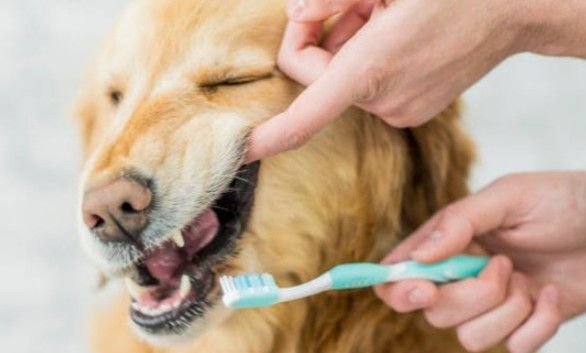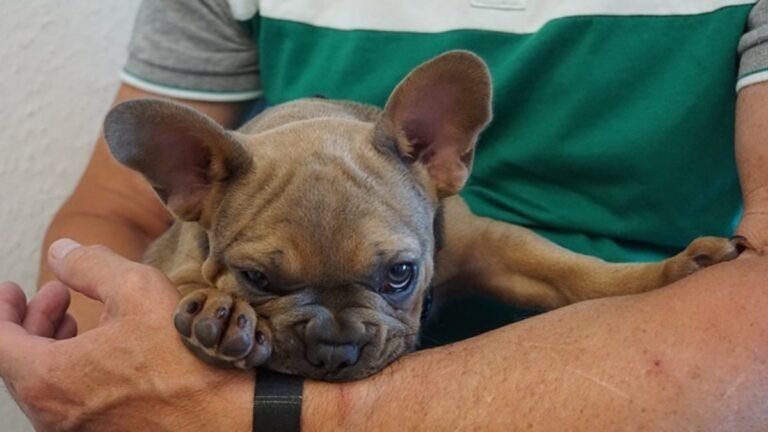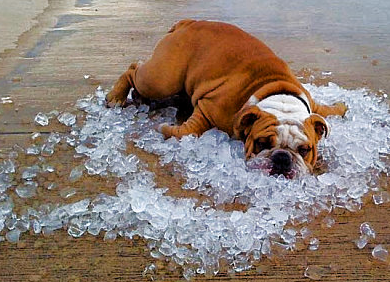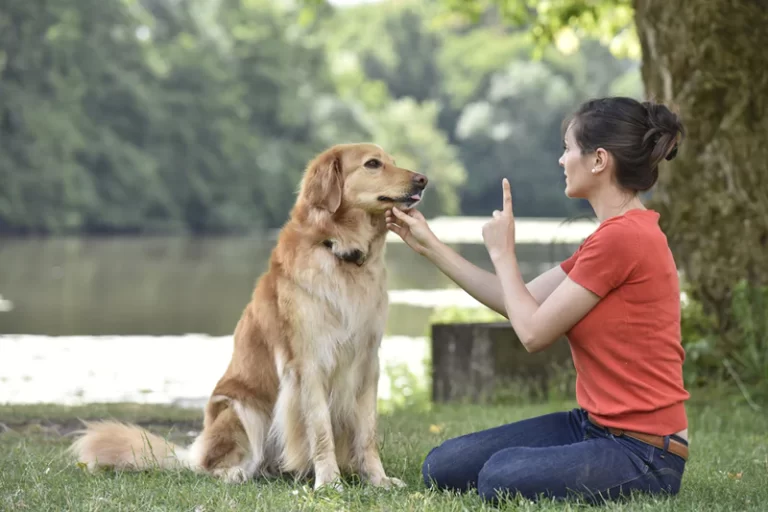Can I Brush My Dog’s Teeth With Human Toothpaste?
What can I use to brush my dog’s teeth?
Brushing your dog’s teeth is an essential part of maintaining their oral health. To brush your dog’s teeth, you’ll need a toothbrush and toothpaste specifically designed for dogs. Here are some recommendations:
- Dog Toothbrush:
- Choose a toothbrush that is specifically designed for dogs. Dog toothbrushes come in various shapes and sizes, including finger brushes and traditional brushes with bristles. Select a brush that is appropriate for the size of your dog’s mouth.
- Dog Toothpaste:
- Never use human toothpaste for your dog, as it may contain ingredients that can be harmful if ingested. Instead, use toothpaste formulated specifically for dogs. Dog toothpaste is available in various flavors that dogs tend to like, such as poultry or beef.
- Finger Brush:
- If your dog is not comfortable with a traditional toothbrush, you can use a finger brush. A finger brush fits over your fingertip and allows you to gently brush your dog’s teeth using a massaging motion.
- Dental Wipes:
- Dental wipes are pre-moistened pads designed for cleaning a dog’s teeth. While not as effective as brushing, they can be a useful alternative, especially for dogs who are resistant to toothbrushing.
When brushing your dog’s teeth:
- Introduce Gradually: If your dog is not used to having their teeth brushed, introduce the process gradually. Start by letting them taste the toothpaste and gradually progress to touching their teeth and gums.
- Be Gentle: Use gentle, circular motions to brush your dog’s teeth. Focus on the outer surfaces of the teeth, especially near the gumline.
- Positive Reinforcement: Reward your dog with praise, treats, or playtime after each brushing session to create a positive association with the activity.
- Frequency: Aim to brush your dog’s teeth at least 2-3 times a week. Regular brushing helps prevent plaque and tartar buildup and contributes to better oral health.
If you’re unsure about how to brush your dog’s teeth or if your dog is resistant to the process, consult with your veterinarian. They can provide guidance on proper dental care and may recommend professional dental cleanings when necessary. Regular dental care is essential for preventing dental issues and promoting your dog’s overall well-being.
What can I use if I don’t have dog toothpaste?
If you don’t have access to dog toothpaste, it’s important to avoid using human toothpaste as it often contains ingredients, such as fluoride, that can be harmful if ingested by dogs. Instead, you can use alternative methods to clean your dog’s teeth until you can obtain proper dog toothpaste. Here are some alternatives:
- Water: While it doesn’t replace the benefits of toothpaste, simply using water and a toothbrush or dental wipe to remove debris and plaque from your dog’s teeth is better than doing nothing.
- Homemade Dog Toothpaste:
- You can create a homemade toothpaste using ingredients safe for dogs. Mix baking soda with water to form a paste. Be cautious with the quantity of baking soda, as too much can be abrasive. Some recipes also include a small amount of coconut oil or a flavoring agent like chicken or beef broth to make it more appealing.
- Coconut Oil:
- Coconut oil has natural antibacterial properties and can be used to clean your dog’s teeth. Apply a small amount of melted coconut oil to a toothbrush or dental wipe and gently brush your dog’s teeth.
- Dental Chews:
- Dental chews and toys designed to promote oral health can help reduce plaque and tartar buildup. While they do not replace the action of brushing, they can be a supplement to your dog’s oral care routine.
- Dental Wipes:
- Dental wipes designed for dogs are pre-moistened and can be used to wipe your dog’s teeth and gums. They may not provide the same level of cleaning as brushing, but they can help remove some debris.
Remember that these alternatives are not substitutes for regular dental care, and using dog toothpaste is the best practice for maintaining your dog’s oral health. It’s always a good idea to consult with your veterinarian for advice on dental care and suitable products for your specific dog’s needs. Regular dental care is crucial in preventing dental issues and promoting your dog’s overall well-being.
What can I clean dogs teeth with?
Cleaning your dog’s teeth is essential for their overall health. While dog toothpaste is the ideal choice, there are alternatives and additional methods you can use to help maintain good oral hygiene for your dog:
- Dog Toothbrush:
- Use a toothbrush specifically designed for dogs. These brushes have softer bristles and come in various shapes and sizes to suit different mouth sizes. Finger brushes that fit over your fingertip can also be convenient.
- Dog Toothpaste:
- Use dog-specific toothpaste. These toothpastes are formulated to be safe for dogs, as they are designed to be swallowed. They come in various flavors that dogs tend to enjoy, such as poultry or beef.
- Water and Toothbrush:
- In the absence of toothpaste, you can wet the toothbrush with water and gently brush your dog’s teeth. This is better than not brushing at all and helps remove debris and plaque.
- Homemade Toothpaste:
- You can make a simple homemade toothpaste using baking soda and water. Mix a small amount of baking soda with water to form a paste. Be cautious with the quantity of baking soda, as it can be abrasive.
- Coconut Oil:
- Coconut oil has natural antibacterial properties. You can apply a small amount of melted coconut oil to a toothbrush or use it with a dental wipe to clean your dog’s teeth.
- Dental Wipes:
- Use dental wipes designed for dogs. These pre-moistened wipes can be an alternative for cleaning your dog’s teeth and gums, especially if your dog is resistant to brushing.
- Dental Chews and Toys:
- Provide dental chews or toys specifically designed to promote oral health. These items can help reduce plaque and tartar buildup by encouraging chewing and gnawing.
Remember these tips when cleaning your dog’s teeth:
- Be Gentle: Use gentle circular motions, especially near the gumline. Start slowly and gradually increase the time spent brushing as your dog becomes more comfortable.
- Positive Reinforcement: Reward your dog with praise, treats, or playtime after each brushing session to create a positive association with the activity.
- Regularity: Aim to brush your dog’s teeth at least 2-3 times a week. Consistency is key to maintaining good oral health.
Always consult with your veterinarian for guidance on dental care and suitable products for your specific dog’s needs. Regular dental care is crucial for preventing dental issues and promoting your dog’s overall well-being.
What toothpaste is safe for dogs?
Dog toothpaste is specifically formulated to be safe for dogs, and it is important to use it rather than human toothpaste. Human toothpaste often contains ingredients, such as fluoride, xylitol, and other chemicals, which can be harmful if ingested by dogs.
When choosing a safe toothpaste for dogs, look for the following features:
- Dog-Specific Formulation:
- Ensure that the toothpaste is specifically formulated for dogs. Dog toothpaste is designed to be safe for them to swallow and comes in flavors that dogs find palatable, such as poultry, beef, or other dog-friendly tastes.
- No Xylitol:
- Avoid toothpaste that contains xylitol, as this sugar substitute can be toxic to dogs. Xylitol can cause a rapid release of insulin, leading to hypoglycemia (low blood sugar), seizures, and other serious health issues.
- Fluoride-Free:
- While fluoride is beneficial for human teeth, it’s not necessary for dogs and can be harmful if ingested in large amounts. Choose fluoride-free toothpaste for dogs.
- Safe Ingredients:
- Check the ingredient list for safe and non-toxic components. Most dog toothpaste contains safe abrasives and enzymes to help reduce plaque and tartar.
Some popular and reputable brands of dog toothpaste include:
- Virbac CET Enzymatic Toothpaste: Available in various flavors, CET toothpaste contains enzymes that help control plaque and prevent the formation of tartar.
- Nylabone Advanced Oral Care Toothpaste: Nylabone offers dog toothpaste with Denta-C, a blend of ingredients to reduce plaque and freshen breath.
- Arm & Hammer Clinical Care Dental Gum Health Toothpaste: Formulated with baking soda, this toothpaste is designed to fight tartar buildup and promote gum health.
When introducing tooth brushing to your dog, start gradually, use positive reinforcement, and make the experience enjoyable. Consult with your veterinarian for guidance on dental care and the use of specific toothpaste based on your dog’s individual needs. Regular dental care is crucial for preventing dental issues and promoting your dog’s overall well-being.
What happens if I never brush my dogs teeth?
If you never brush your dog’s teeth, it can lead to various dental issues and impact your dog’s overall health. Proper dental care is crucial for dogs, and neglecting their oral hygiene can result in the following consequences:
- Plaque and Tartar Buildup:
- Lack of tooth brushing allows plaque to accumulate on your dog’s teeth. Over time, plaque can mineralize and turn into tartar, a hard, yellowish-brown substance that adheres to the teeth and can only be removed by professional dental cleaning.
- Gingivitis:
- Plaque and tartar buildup can lead to gingivitis, which is inflammation of the gums. Signs of gingivitis include red and swollen gums, and it can be painful for your dog.
- Periodontal Disease:
- If dental issues progress, they can lead to periodontal disease, a more advanced form of gum disease. This condition affects the structures supporting the teeth, including the gums, periodontal ligament, and alveolar bone.
- Tooth Decay and Tooth Loss:
- Untreated dental problems can result in tooth decay and, eventually, tooth loss. This not only affects your dog’s ability to eat but can also cause discomfort and pain.
- Bad Breath:
- Poor dental hygiene often results in bad breath (halitosis), which can be unpleasant for both you and your dog.
- Systemic Health Issues:
- Advanced periodontal disease can have systemic effects on your dog’s overall health. Bacteria from the oral cavity can enter the bloodstream and potentially contribute to or exacerbate other health problems, such as heart disease and kidney disease.
- Reduced Quality of Life:
- Dental pain and discomfort can significantly affect your dog’s quality of life. It may result in changes in behavior, decreased appetite, and reluctance to chew on toys or food.
To prevent these issues, it’s essential to establish a regular dental care routine for your dog, including tooth brushing, professional dental cleanings, and providing dental chews or toys. Introduce tooth brushing gradually, use dog-friendly toothpaste, and consult with your veterinarian for guidance on dental care tailored to your dog’s individual needs. Regular dental care is a proactive measure to ensure your dog’s oral health and overall well-being.
How can I professionally clean my dog’s teeth at home?
While professional dental cleanings performed by a veterinarian are the most effective way to address serious dental issues in dogs, there are some steps you can take at home to contribute to your dog’s dental health. However, it’s crucial to note that these methods are not a substitute for professional veterinary care. Regular veterinary check-ups and cleanings remain essential. Here are some home care tips:
- Toothbrushing:
- Use a dog-specific toothbrush and toothpaste to brush your dog’s teeth. Start gradually, and make it a positive experience by rewarding your dog afterward. Aim to brush your dog’s teeth at least 2-3 times per week.
- Dental Chews and Toys:
- Provide dental chews or toys designed to promote oral health. These items can help reduce plaque and tartar buildup by encouraging chewing and gnawing.
- Dental Wipes:
- Use dental wipes designed for dogs to wipe your dog’s teeth and gums. While not as effective as brushing, they can help remove some debris.
- Diet:
- Feed your dog a balanced diet that supports dental health. There are specially formulated dental diets available that aim to reduce plaque and tartar.
- Water Additives:
- Consider using water additives designed to promote dental health. These additives are added to your dog’s water bowl and can help reduce plaque and freshen breath.
- Professional Dental Scaling Tools for Dogs:
- Some pet owners use dental scaling tools designed for dogs to remove visible tartar at home. However, it’s crucial to use these tools with caution to avoid causing harm to your dog’s teeth or gums. Consult with your veterinarian before attempting this, and they may provide guidance on safe usage.
Remember that maintaining your dog’s oral health at home is a preventive measure, and it cannot replace the need for professional veterinary dental care. Regular veterinary check-ups will help identify any dental issues early on, and professional cleanings are necessary to address more advanced problems.
If you’re considering home dental care, consult with your veterinarian first. They can provide guidance on suitable products, techniques, and assess your dog’s specific needs. Additionally, if your dog shows signs of dental problems, such as bad breath, swollen gums, or difficulty eating, seek veterinary attention promptly.
What is the best natural cleaner for dogs teeth?
While there are various natural options for promoting dental health in dogs, it’s important to note that regular tooth brushing with a dog-specific toothbrush and toothpaste is still considered the gold standard for maintaining oral hygiene. However, if you’re looking for natural ways to support your dog’s dental health, here are some options:
- Coconut Oil:
- Coconut oil has natural antibacterial properties and can be used to promote oral health in dogs. You can apply a small amount of melted coconut oil to your dog’s teeth and gums using a toothbrush or a dental wipe.
- Carrots:
- Chewing on raw carrots can help promote dental health by encouraging your dog to gnaw and scrape their teeth. The natural crunching action can contribute to reducing plaque.
- Parsley:
- Fresh parsley is rich in chlorophyll, which has natural breath-freshening properties. You can add a small amount of finely chopped parsley to your dog’s food.
- Apples:
- Apples, particularly crisp and firm ones, can provide a natural chewing action that helps clean teeth. Additionally, apples contain fiber, which can contribute to overall oral health.
- Turmeric:
- Turmeric has anti-inflammatory and antibacterial properties. You can make a paste by mixing a small amount of turmeric with water and apply it to your dog’s teeth. However, use turmeric with caution, as it may stain.
- Kelp:
- Kelp, a type of seaweed, contains natural compounds that may help reduce plaque and tartar. Some dental products for dogs include kelp as an ingredient.
It’s essential to incorporate these natural options as part of a broader dental care routine and not rely solely on them. Regular tooth brushing, appropriate dental chews, and professional veterinary dental check-ups are still crucial for maintaining your dog’s oral health.
Before introducing any new items or natural remedies into your dog’s diet, consult with your veterinarian. They can provide guidance based on your dog’s specific needs and help you create a comprehensive dental care plan.
Can I make homemade dog toothpaste?
Yes, you can make homemade dog toothpaste using simple and dog-safe ingredients. Here’s a basic recipe for homemade dog toothpaste:
Homemade Dog Toothpaste Recipe:
Ingredients:
- 1 tablespoon baking soda
- 1/2 teaspoon water
- 1/2 teaspoon coconut oil (optional)
- A small amount of dog-friendly broth or bouillon for flavor (optional)
Instructions:
- In a small bowl, mix the baking soda and water to form a paste. Adjust the consistency by adding more water if needed.
- If using, add coconut oil to the mixture. Coconut oil has natural antibacterial properties and can add a pleasant flavor.
- For added flavor, you can include a small amount of dog-friendly broth or bouillon. Ensure that it doesn’t contain any ingredients harmful to dogs, such as onion or garlic.
- Stir the ingredients until well combined.
- Use a toothbrush or finger brush specifically designed for dogs, dip it into the homemade toothpaste, and gently brush your dog’s teeth.
Notes:
- It’s essential to introduce the taste of the toothpaste gradually to your dog. Allow them to taste a small amount before attempting to brush their teeth.
- Always use dog-specific toothpaste whenever possible, but this homemade option can be a temporary solution if you run out or prefer a DIY approach.
- Consult with your veterinarian before using any homemade dental products, especially if your dog has specific oral health concerns.
Remember that regular tooth brushing with proper dog toothpaste remains the most effective method for maintaining your dog’s oral health. This homemade toothpaste can be a supplement or temporary solution, but it’s essential to ensure its safety and effectiveness for your specific dog’s needs.
Is it OK to brush dog’s teeth everyday?
Yes, it is generally okay to brush your dog’s teeth every day, and in fact, daily brushing is often recommended for optimal oral health. Regular tooth brushing is one of the most effective ways to prevent dental issues in dogs, including plaque buildup, tartar formation, gingivitis, and other dental diseases.
Here are some key points to keep in mind when brushing your dog’s teeth daily:
- Use Dog-Specific Toothpaste:
- Always use toothpaste formulated specifically for dogs. Human toothpaste can contain ingredients like fluoride and xylitol, which can be harmful to dogs if ingested.
- Dog-Specific Toothbrush:
- Use a toothbrush designed for dogs. You can choose from various types, including traditional brushes, finger brushes, or even dental wipes. Select a size and type that is suitable for your dog’s mouth and your comfort level.
- Positive Reinforcement:
- Make the tooth-brushing experience positive for your dog. Use praise, treats, or playtime as rewards to create a positive association with the activity.
- Introduce Gradually:
- If your dog is not used to having their teeth brushed, introduce the process gradually. Allow them to get used to the taste of the toothpaste, and slowly progress to touching their teeth and gums.
- Consistency is Key:
- Consistency is crucial for maintaining good oral health. Brushing your dog’s teeth every day helps prevent the accumulation of plaque and tartar, reducing the risk of dental issues.
- Regular Veterinary Check-ups:
- Even with regular tooth brushing, it’s important to schedule regular veterinary check-ups. Your veterinarian can assess your dog’s oral health, perform professional cleanings when necessary, and address any dental concerns.
While daily tooth brushing is beneficial, some dogs may be more resistant to the process. If your dog is not cooperative, consider seeking advice from your veterinarian or a professional dog trainer. They can provide guidance on effective tooth brushing techniques and alternative methods for maintaining your dog’s oral health.









